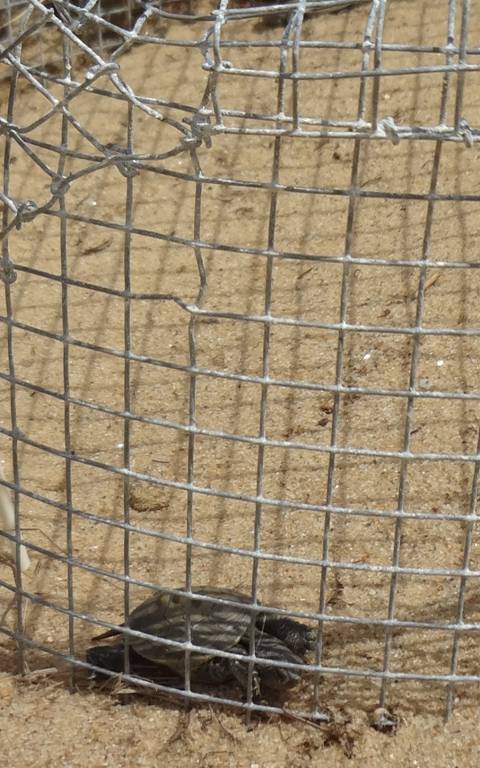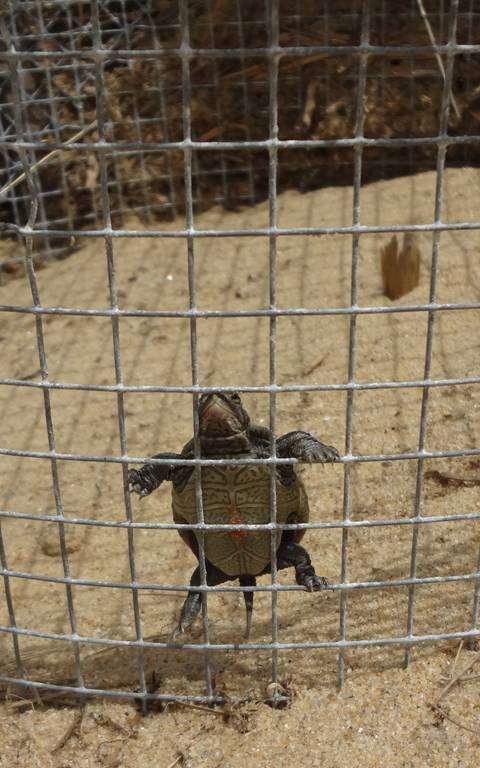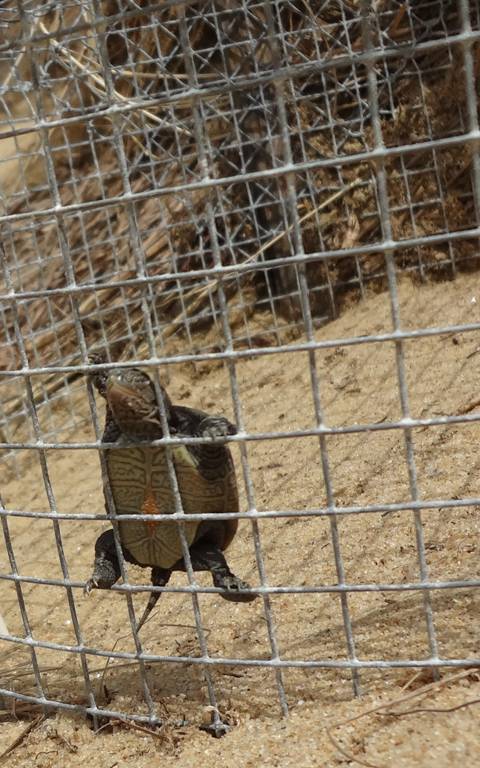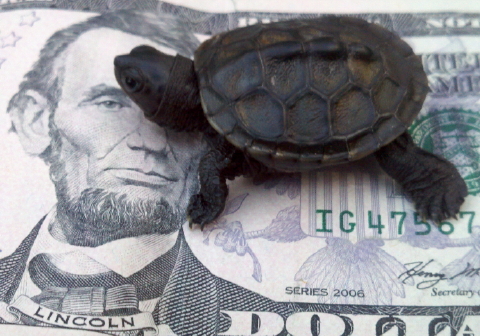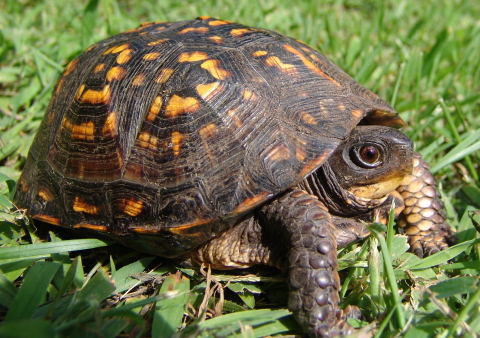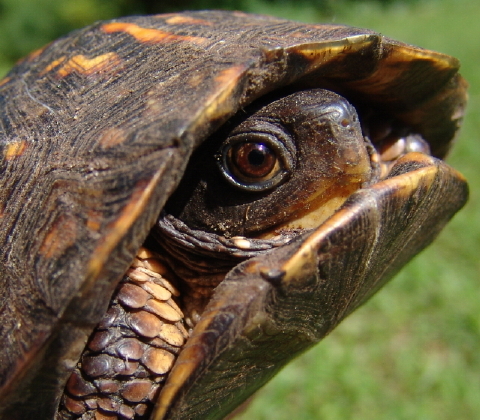
Emerging Baby Diamondback Terrapin
Hot and humid weather settled over the South Coast of Massachusetts for the last weekend of August; perfect conditions to entice turtle babies to emerge from incubation under the hot, baking sands. The Turtle Journal team discovered hatched nests on a barrier beach in Aucoot Cove between Marion and Mattapoisett, rescuing three pipped and vulnerable babies that were left behind by their more robust siblings. The team also recovered a viable egg from another hatched nest. Those three still developing babies and the viable egg would have been predator bait as soon as the sun set this evening.

Hatchling Emergence Hole on Schaefer Lab BeachÂ
Sue Wieber Nourse found an exciting discovery on the Schaefer Lab Beach in Sippican Harbor this morning. Somehow, between all the human buzz and bustle at formerly secluded and protected Tenbrook Beach, amidst piles of kayaks and inflatables and fire pit and picnic table and beach chairs, a determined female terrapin managed to dig a nest in the highly compacted sand sometime in early June. This morning Sue spotted an emergence hole, signaling that hatchlings had been born and escaped from this nest. (ASIDE: You may recall that Sue documented a nesting turtle on Schaefer Lab Beach on July 2nd, see Rare Turtle Nests at Tabor’s Schaefer Lab. Those twelve eggs have been protected and should emerge in late September.)
 
 Obstacles Block Hatchling Path to Nursery Marsh
Hatchlings that emerged from this hole on Schaefer Lab Beach face enormous odds to escape human obstacles … in addition to threats from legions of non-human predators that all baby turtles must confront. A line of watercraft thwarts access to the salt marsh on the west. A sea wall blocks passage to the east and a concrete rim poses a seemingly impossible hazard for these 1-inch, 1/4-ounce babies to crawl northward to the harbor. Hopefully, a few babies will zigzag their way through this human maze to reach safe haven in the nursery salt marsh. Nearly a decade and a half ago, the very first hatchling in Marion was discovered here by Jared Nourse and Sue Wieber Nourse, then Director of the Schaefer Oceanology Lab and the head of the Tabor Academy Summer Program for marine studies. Also, the first headstarted terrapin hatchlings were released into this same salt marsh by Tabor Academy advanced marine science students in field research under Sue’s leadership in 2004.

11 Hatchlings Beat the Odds at Schaefer Lab Beach
This morning, August 25th, Sue documented that 11 diamondback terrapin hatchlings were born and had emerged from this spot on Schaefer Lab Beach off Sippican Harbor in Marion, Massachusetts. The odds are still long for their survival, but the odds were equally poor for the female to have discovered a break in human activity to deposit her eggs, for the nest to have avoided depredation by a host of hungry predators, for the eggs to have achieved the right conditions to incubate, for the hatchlings to have avoided being crushed by the movement of boats and other heavy equipment over their nest, and for these tiny babies to have dug their way through the highly compacted sand to reach freedom. So, bon chance, baby terrapins!
